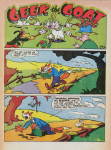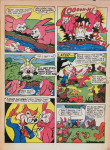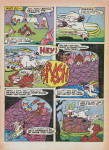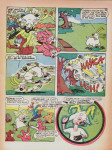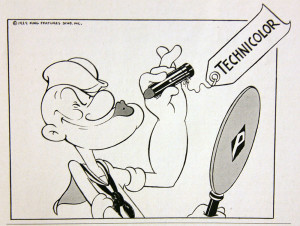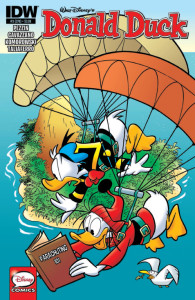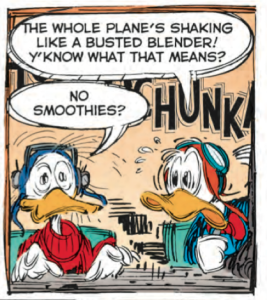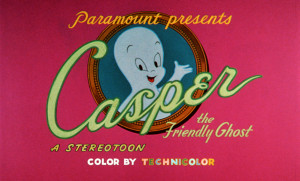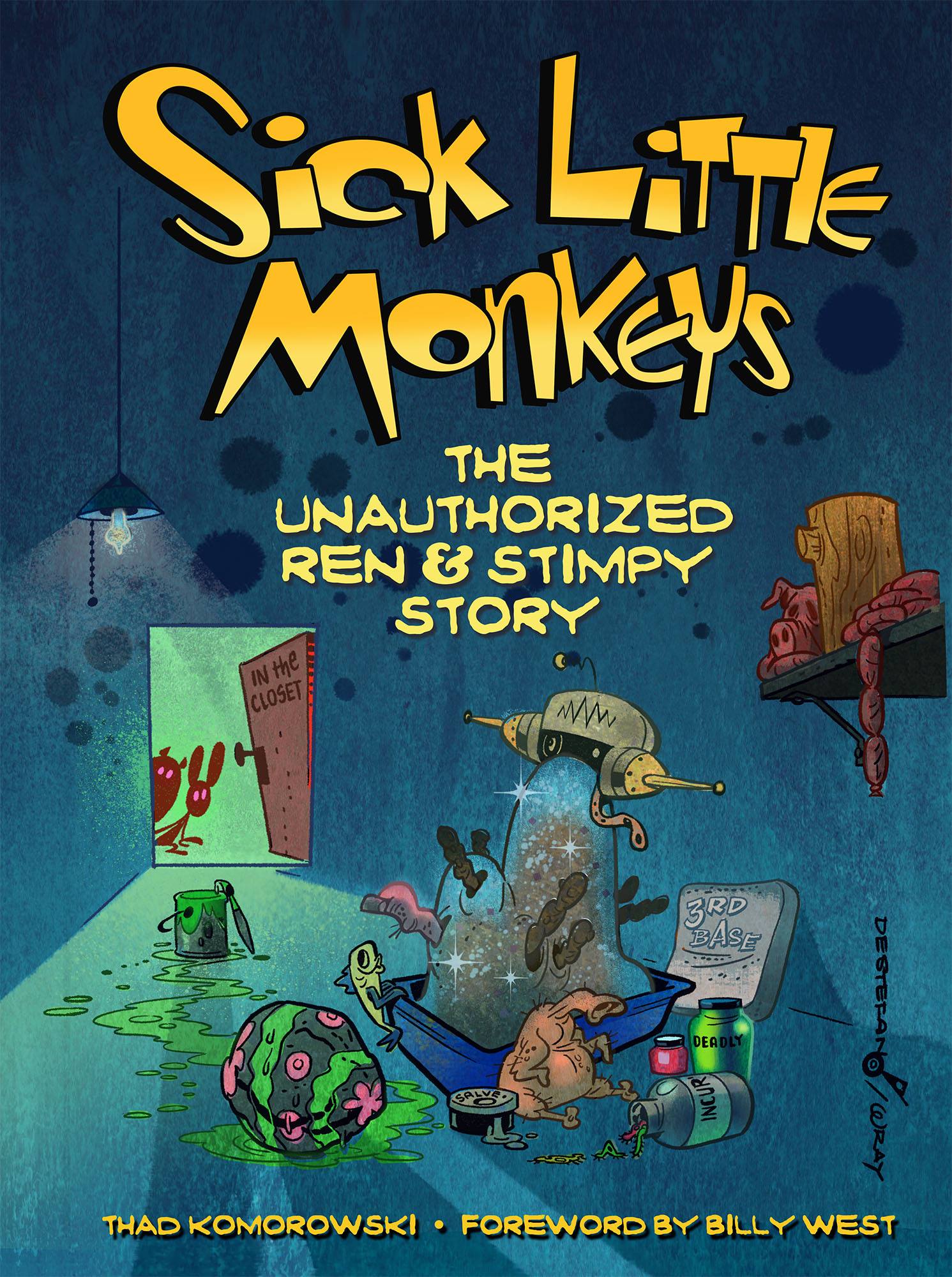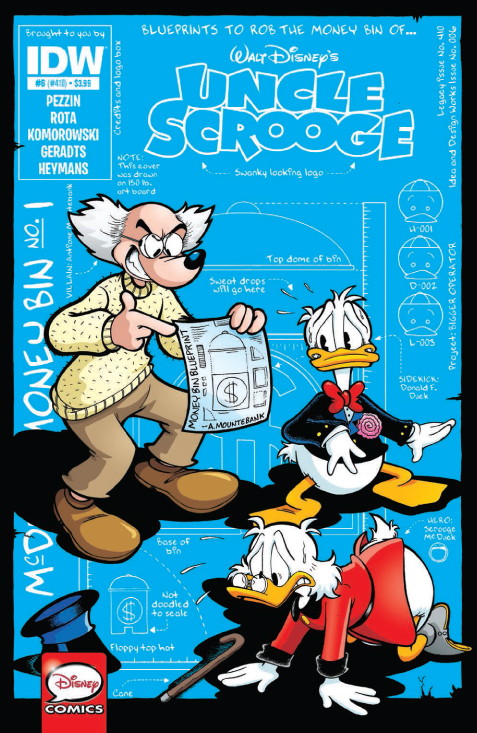 As much as I decry nostalgia, I’ve got the bug: going to the comic shop regularly again to buy Disney comic books takes me back. But who could have foreseen that my name would actually be on the covers? Especially covers already boasting Walt Disney’s? To the left is last month’s Uncle Scrooge #410, in which I scripted the American dialogue for “The Bigger Operator,” a 1974 story written by Giorgio Pezzin and drawn by Marco Rota. The great blueprint cover was drawn by Jonathan Gray.
As much as I decry nostalgia, I’ve got the bug: going to the comic shop regularly again to buy Disney comic books takes me back. But who could have foreseen that my name would actually be on the covers? Especially covers already boasting Walt Disney’s? To the left is last month’s Uncle Scrooge #410, in which I scripted the American dialogue for “The Bigger Operator,” a 1974 story written by Giorgio Pezzin and drawn by Marco Rota. The great blueprint cover was drawn by Jonathan Gray.
Archival editor David Gerstein’s staff of writers, artists, and designers is his dream A-Team (of which I’m proud to be a part of), and he’s stuffing just about every issue with prime material. It’s easily the most satisfying Disney line since the original Gladstone run of 1986-90. Most refreshing is that publisher IDW has gone back to a format that encourages impulse buys, with 40-page monthlies at $3.99 (although my mother was aghast comic books were priced as high as that). I’ve always maintained the 64-page “prestige” format that Bruce Hamilton spearheaded during the second run at Gladstone in the ‘90s, and continued at Gemstone in the ‘00s, was a mistake that cost the Disney comics their general readership here in America. It’s probable passerby would see a $3.99 monthly comic-book with Donald, Scrooge, or Mickey and say, “Hey, I love these guys! I want it!” Upwards of $8? Forget it.
That’s not to say things are perfect now, though. There’s thousands of pages of great Disney comics that have never seen publication in America, and I applaud the emphasis of printing Romano Scarpa’s unseen classics. But we’ve got some pretty talented living cartoonists and writers right here in the states who’d love to take a crack at these characters, so it’s a crying shame the budget won’t allow the production of brand-new material.
The flagship anthology Walt Disney’s Comics and Stories probably isn’t the place for the yearlong “Zodiac Stone” serial either, especially since it will take up the near entirety of every issue for twelve months (its total length is over 300 pages). And I certainly can’t get behind fulfilling reader requests for reprints of the fatally bland Mickey Mouse comics drawn by Bill Wright and Paul Murry. But, if every issue was full of “excellent” material, it’d run out fast. (Another flaw of the 64-page format is if you need to fill that many pages every month, the well will surely dry.) If there is a loyal audience for Wright, Murry, or even (shudder) Tony Strobl, why deprive them? And there’s certainly no reason to decry “Zodiac Stone,” a fine story Jonathan Gray has wanted to bring stateside for some time, finally seeing American publication, even if the presentation isn’t ideal.
If you had to subscribe to just one title, I’d probably choose Donald Duck, for its consistent inconsistency of the main character. In one issue, he’s the quintessential Barksian career bungler working for Uncle Scrooge’s brother’s newspaper. In another, he could be paired with cousin Fethry in an odd-couple secret agent adventure. The beauty of the comic-book Donald, compared to the one-dimensional animated duck, is the casting range: regardless of setting and motivation, there remains no question he is the same character at his core.
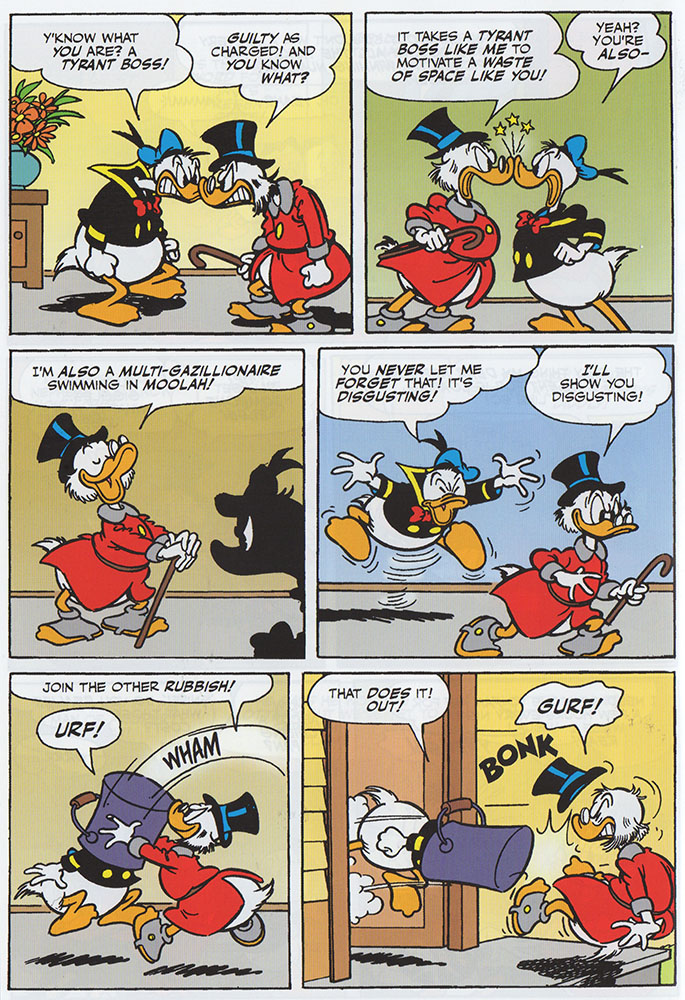 The most intriguing story so far has been “The Diabolical Duck Avenger,” the 1969 origin of Donald’s caped crusader alter ego that appeared in Donald Duck #372 and #373. The utterly adolescent Donald here, obsessed with outwitting Scrooge and cousin Gladstone Gander by any unsavory means, recalls not Barks or any other Disney creator, but John Stanley and his male antiheroes, Tubby Tompkins (Little Lulu’s bosom chum) in particular. For pages, there’s strictly non-expositional and aggressive business, the most Stanley-like of which I’ve illustrated here. As in Stanley’s longer-form stories, Guido Martina (the story’s Italian writer) seems to just be filling panels and biding time until the real action starts.
The most intriguing story so far has been “The Diabolical Duck Avenger,” the 1969 origin of Donald’s caped crusader alter ego that appeared in Donald Duck #372 and #373. The utterly adolescent Donald here, obsessed with outwitting Scrooge and cousin Gladstone Gander by any unsavory means, recalls not Barks or any other Disney creator, but John Stanley and his male antiheroes, Tubby Tompkins (Little Lulu’s bosom chum) in particular. For pages, there’s strictly non-expositional and aggressive business, the most Stanley-like of which I’ve illustrated here. As in Stanley’s longer-form stories, Guido Martina (the story’s Italian writer) seems to just be filling panels and biding time until the real action starts.
It’s a gamble for sure. Stanley is nowhere near as universally loved as Barks, as he took bigger risks portraying humanity’s nasty side and eschewed the warm sincerity that pervades all but a scant few of Barks’s stories. Martina penned dozens of stories in this mold, and Gary Leach, the American translator of “The Diabolical Duck Avenger”, perfectly preserved it. For the right reader, it’s a gamble in characterization that paid off handsomely.
Whereas there’s no gamble buying any of these comics. If you haven’t caught up with them, do so, in hopes that David and his pals can keep it up.
(For the record: I speak only for myself as a comics historian, scholar, and geek, not as a representative of IDW or Disney.)

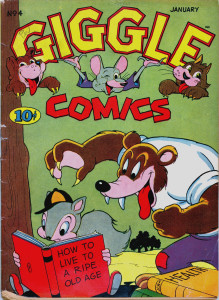 One of the great pleasures writing a history of the New York animation studios is finally doing some appreciative analysis of John Gentilella, or “Johnny Gent,” and his work. Admittedly, it will be brief. He was a relatively minor player—he worked at a higher skill level than any of his Famous Studios colleagues on increasingly mediocre cartoons—but he was an amazing repository of knowledge on the inner workings and personalities at Van Beuren, Terry’s, and Famous. It’ll be nice to have his memories give color to the larger story.
One of the great pleasures writing a history of the New York animation studios is finally doing some appreciative analysis of John Gentilella, or “Johnny Gent,” and his work. Admittedly, it will be brief. He was a relatively minor player—he worked at a higher skill level than any of his Famous Studios colleagues on increasingly mediocre cartoons—but he was an amazing repository of knowledge on the inner workings and personalities at Van Beuren, Terry’s, and Famous. It’ll be nice to have his memories give color to the larger story.